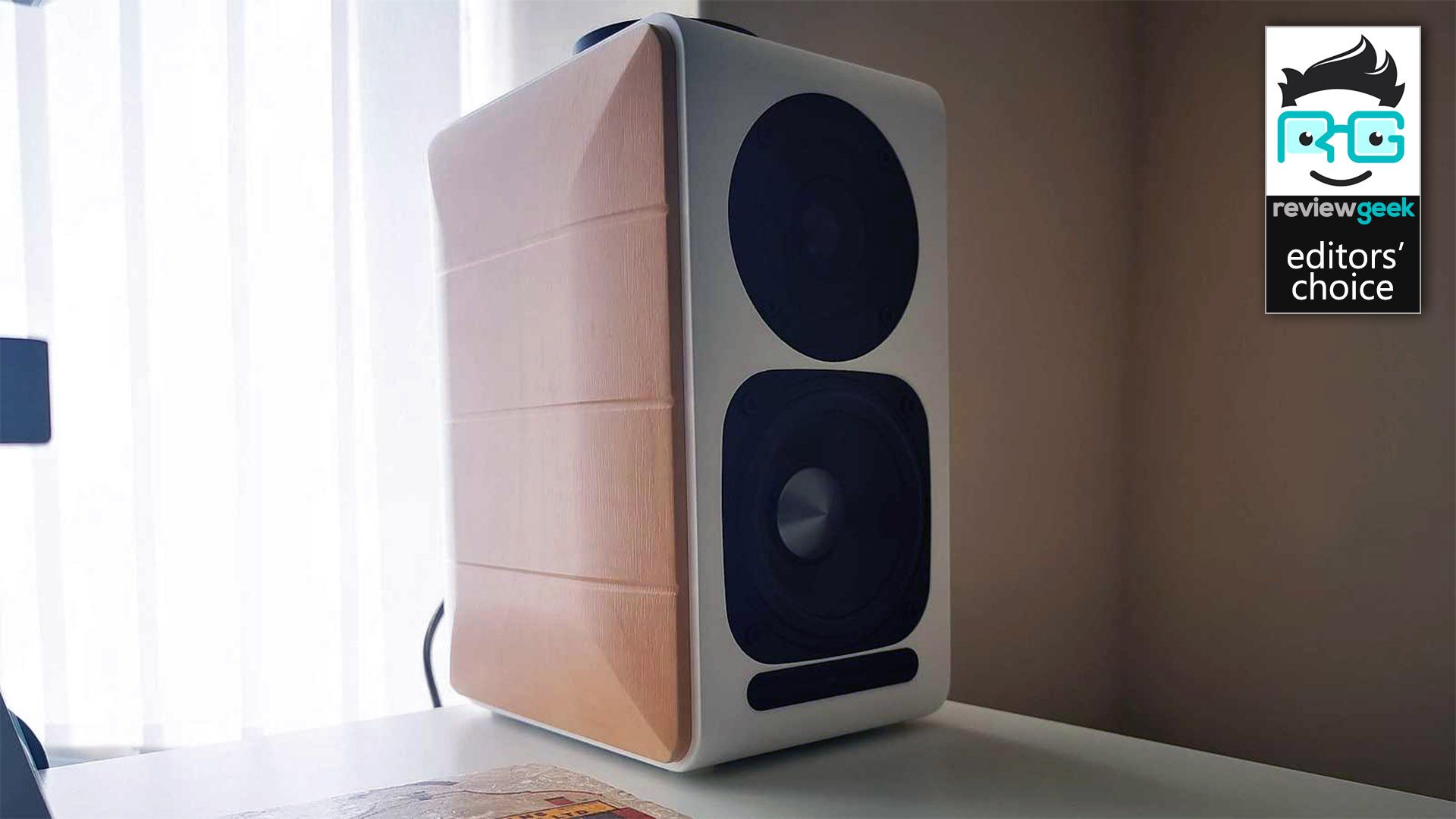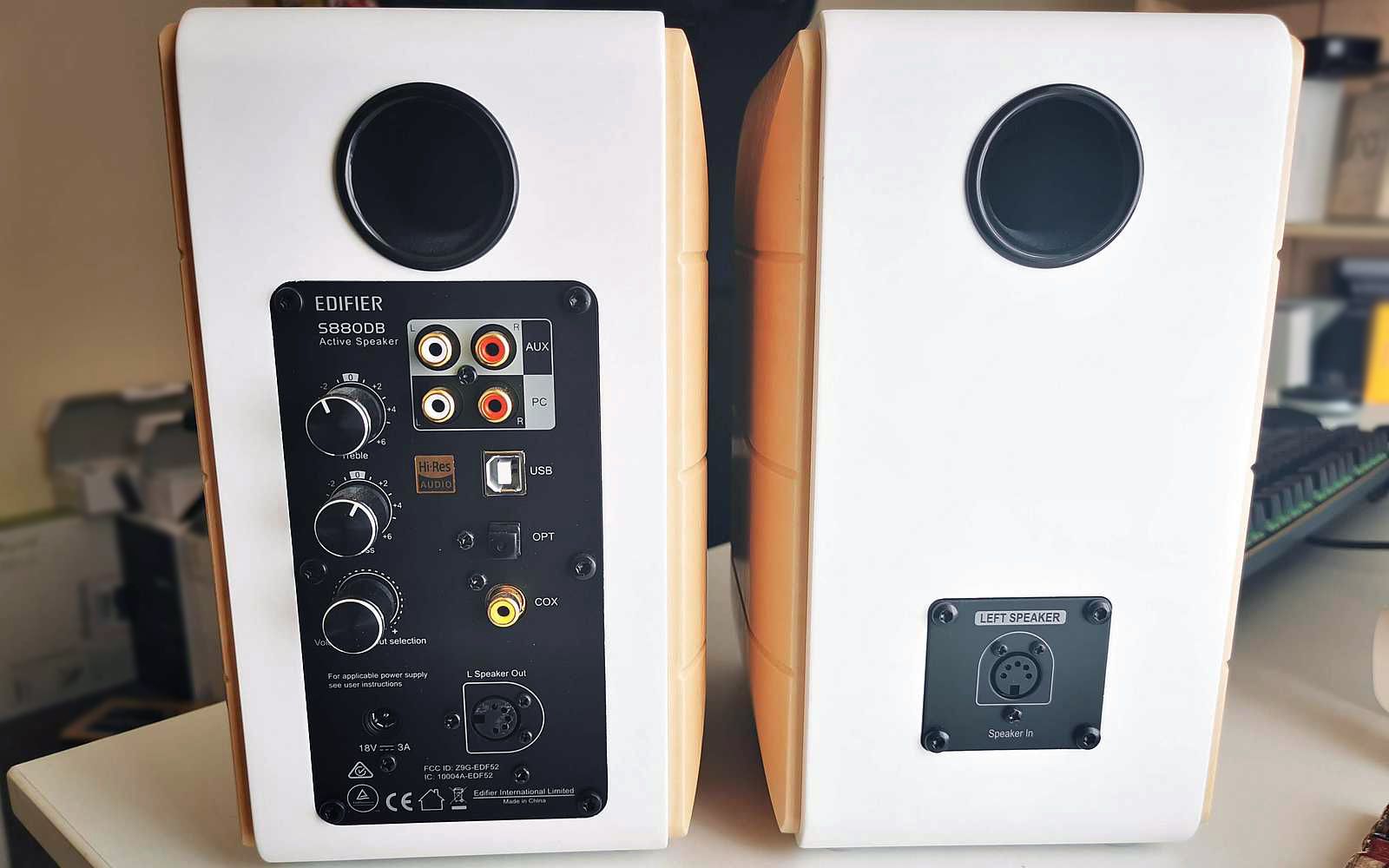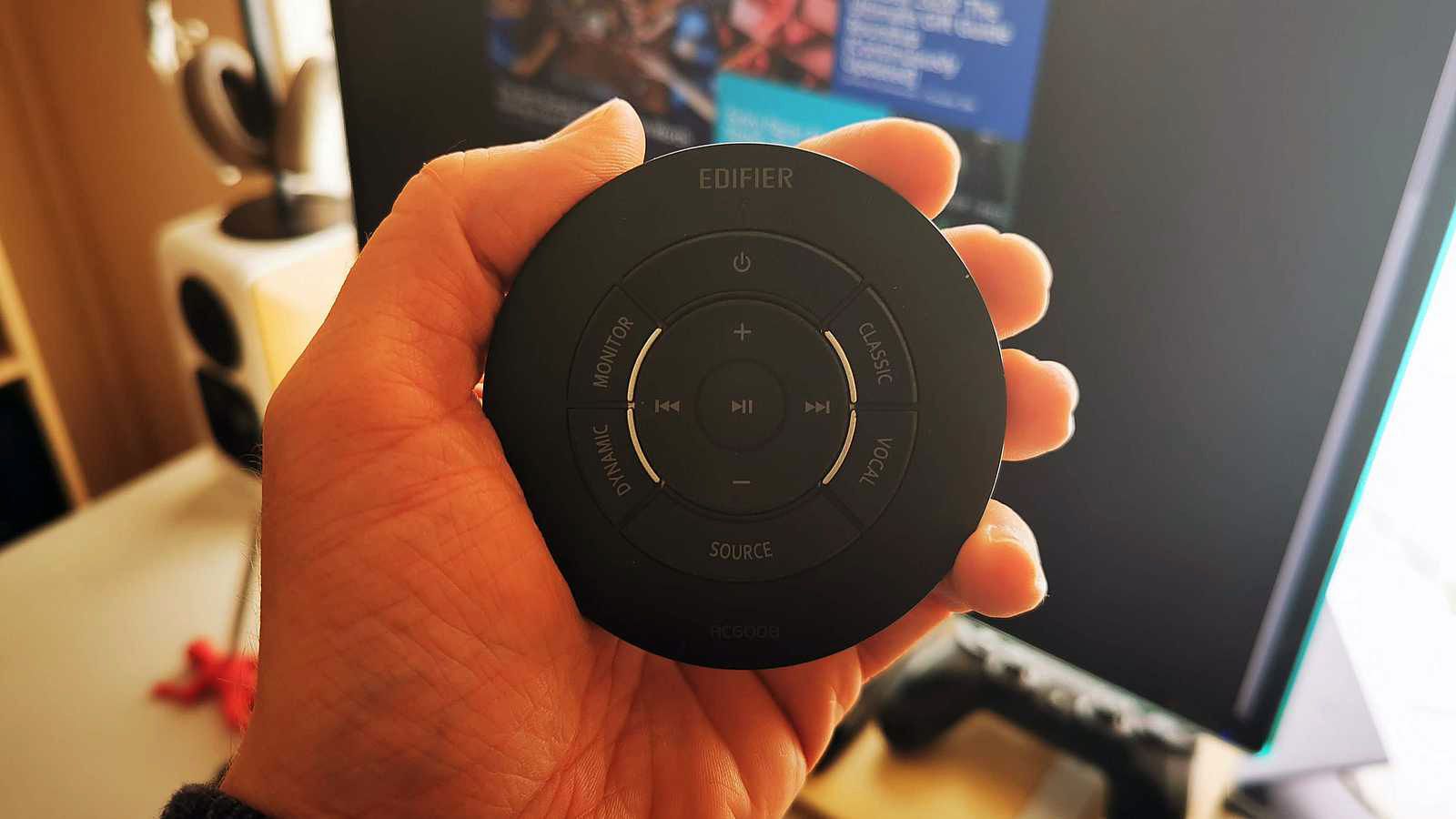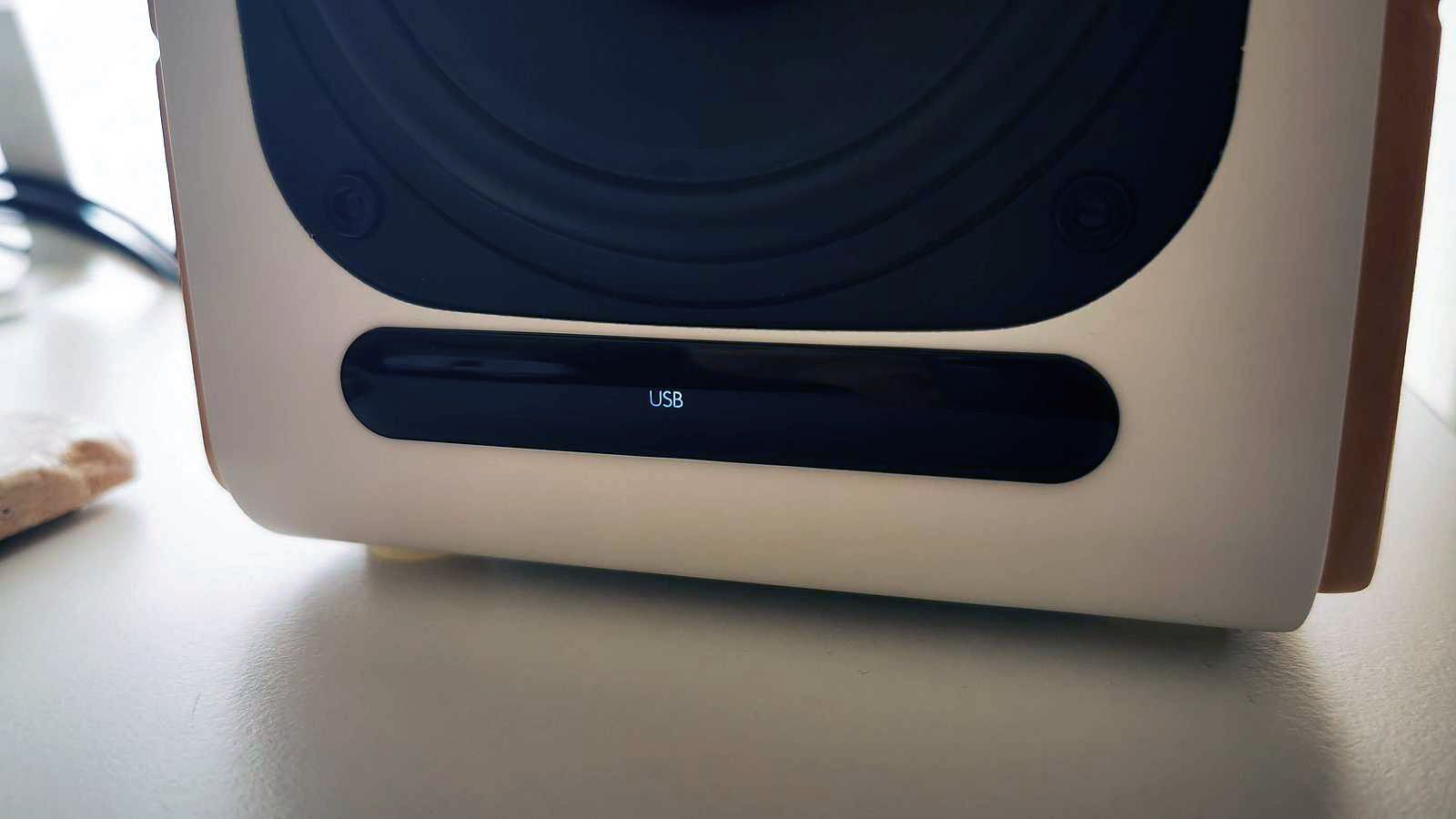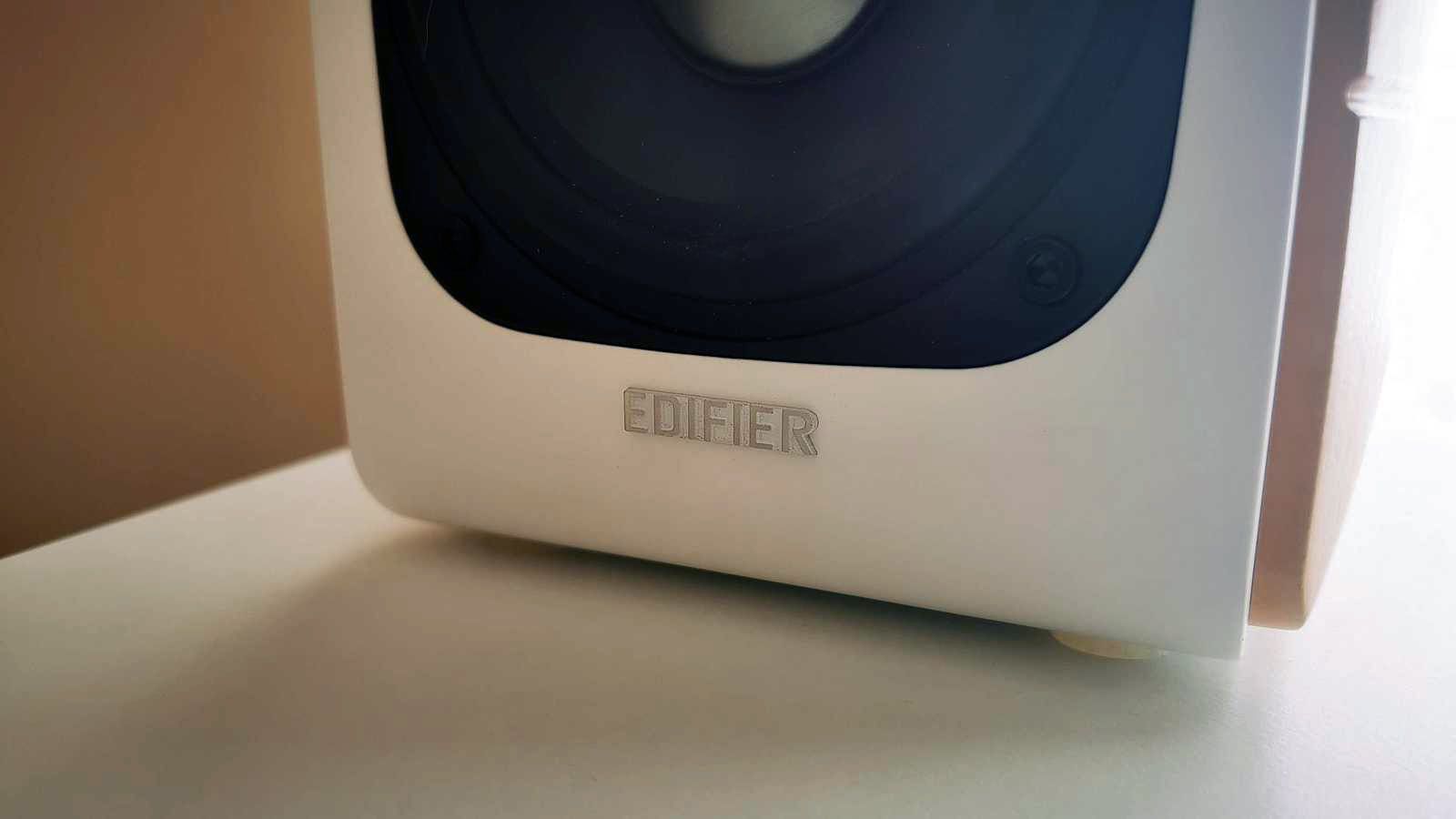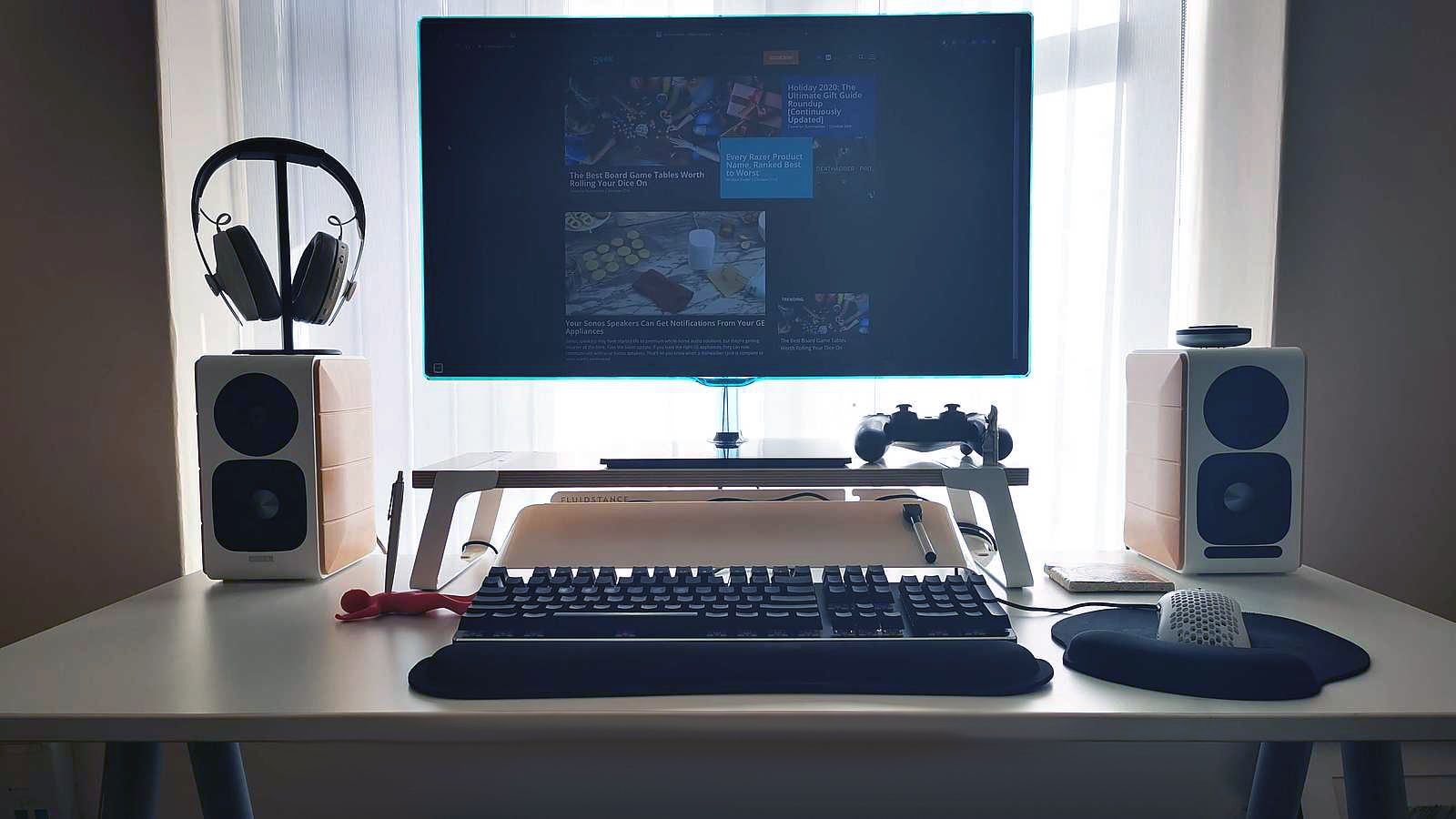Edifier is a brand renowned for its high-quality yet inexpensive speakers. The Edifier S880DB bookshelf monitor speakers are one such example. They retail at a very reasonable $259.99 and, at that price, I'd say they are a bargain.
If you're looking for some stylish bookshelf speakers that deliver excellent sound, then I recommend popping these on your wishlist and grabbing a pair as soon as you can. With that in mind, let's take a look at exactly why these speakers are so good.
How Do They Look?
In terms of form factor, the S880DB speakers are beautifully crafted, much like their less expensive sibling, the Edifier R1280T. Color-wise, the main body of each speaker cabinet is white, with natural wood panels flanking either side. By contrast, the speakers themselves are all black. The tweeter is circular, while the sub-woofer is a rounded square. The active speaker has a little LED source menu at the bottom, concealed below a black plastic strip.
The box contains one active and one passive speaker cabinet. If a speaker is active, this means that it is powered and can control a passive speaker using its built-in pre-amplifier. As a result, the rear of the two speakers looks remarkably different.
The active S880DB speaker has a range of controls mounted on a panel at the rear, alongside the power input, source inputs, and connections, so it can feed a sound signal to the passive speaker. In terms of controls, from the top left and running downward, we have treble and bass dials, and a volume dial that is multifunctional, cycling through input sources with a deft click inwards. The power input is bottom left and a bass reflex port is at the top.
Auxilliary and PC inputs are top right, with the USB-B input for digital audio below. An optical input sits beneath the USB-B, and a 6-pole DIN output to connect the active and passive speakers together.
As you can see from the comparison picture above, the rear of the passive speaker is sparse in comparison to the active speaker; it has the input for the connection cable that hooks the active and passive speakers up and a bass reflex port at the top.
Overall, a nice tidy set of speakers that will look just as good as part of your home-theater setup as they will sitting on your office desk. They are fairly compact, with a footprint measuring only 5 x 7 inches and a height of 10-inches. Not a great deal of real estate taken up by these babies.
Simple Setup and Operation
The Edifier S880DB speakers are very easy to set up and operate. The ease of setup comes partly from the fact that you get everything you need in the box to hook the speakers up to compatible contraptions. Also, because you have an active speaker, there is no additional setup required with an external amplifier.
Once you connect the two speakers and plug the active speaker into a power source, you're good to go. Connect your sound source using the specified cable and you can then select the appropriate input via a simple click of the volume button at the rear of the active speaker, or by pressing the source button on the remote control. You know which source you are using as it is illuminated in the strip below the active speaker's woofer.
The remote control has a number of other functions, too. It can select from four pre-programmed EQ settings---Dynamic, Monitor, Classic, and Vocal (more on these later)---to alter the sound a little, alongside turning the volume up and down, and skipping tracks back/forward, playing, and pausing sound.
The infrared remote doesn't have a huge range (I measured 13-feet from the speaker before the signal between remote and speaker dropped out), and unless you have eyes like a peregrine falcon you might not be able to see the small source display from the other side of the room. I have mine set up on my desk, though, so seeing the display isn't a problem for me.
How Do They Sound?
Honestly? Given their relatively inexpensive price point and diminutive stature, I didn't expect the S880DB monitors to pack quite so much punch, and boy was I wrong. They are a great pair of speakers and they stand up against some of the more well-known brands on the market, which we will come to shortly.
We mentioned the four sound settings earlier and, out of the box, the speaker EQ is in "Classic" mode, as the default setting. "Classic" mode, according to the instruction manual, represents a classic hi-fi setup. I'm not sure how this actually relates to the sound. I mean, classic hi-fi set-ups differ across the board in terms of how they sound. What I hear in "Classic" EQ is an accentuation of the bass and treble, with the mids taking a very notable step back.
"Monitor" mode is great as it flattens the sound out so that no range stands out above another. In this sense, and thanks to the sound quality these speakers produce, they would make an excellent pair of inexpensive near-field monitors if you are producing your own music on a computer. They would provide an accurate representation of the sound you are creating when in relatively close proximity to you.
With monitors in mind, I also have a pair of Pioneer DJ DM40 monitor speakers, which I use for practicing my DJ skills ("skills" being used in the loosest possible sense here). They normally retail for $179.99, so they're $80 cheaper than the S880DBs. The DM40s are a capable set of speakers yet when I compared the two, I could hear where the extra $80 was spent.
In "Monitor" mode, the S880DB's metal woofer doesn't give the bass sound any coloration, unlike that of the Pioneer DJ DM40's carbon fiber equivalent. The same applies to the titanium laminate tweeters. This means that the sound from the S880DB's is truer to the original recorded sound and, therefore, is more suited to monitoring than the Pioneer DJ speakers.
As vocal music tends to sit in the midrange, this is where the "Vocal" EQ mode applies emphasis, with bass and treble sounding fairly weak. I don't like vocal modes or any mode that takes the lovely bass sounds away from the music I'm listening to. As a result, I only used this mode briefly in testing.
"Dynamic" mode is the fourth and final EQ setting. This gives the sound a little more depth, nudging the bass in front of the mids and applying more treble to the soundstage, adding atmosphere at the top end. This was the mode I used most frequently.
Volume-wise, the speakers are certainly capable of filling a room. They have a combined output of 88 W, so they're not shy when it comes to making a racket. I rarely had to turn the speakers up more than a few notches in my office and was able to enjoy much louder sound when I hooked the speakers up to my Pioneer DJ mixer.
In all, I think the S880DB speakers sound fantastic. They are well-balanced, with music sounding detailed. Sound isn't distorted, with the metal cones keeping music sounding true to its original recorded form until you start mucking about with the EQ to warm the sound up or drop the bass out a bit.
Should I Buy Them?
If you are in the market for a new pair of bookshelf speakers or a new pair of monitor speakers for your computer music projects, then I would certainly recommend the Edifier S880DB. They are easy to set up and operate for anyone who isn't overly familiar with hi-fi components and, as there is no pre-amp to hook up, they're even simpler!
The price of $259.99 isn't a huge outlay for a set of good-quality speakers, and I would recommend the Edifier S880DB to anyone who is looking to add a set of inexpensive bookshelf speakers to their home theater or HiFi setup---they would make a good rear speaker, for example. Given their full range and active powered amplifier, they would make great standalone speakers if you need a starting point for your AV devices.
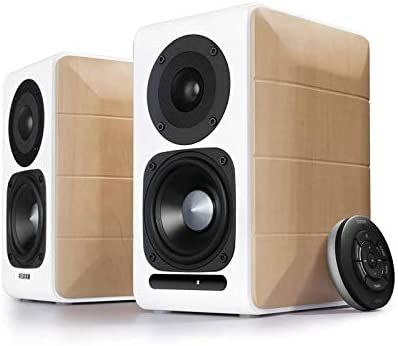
Edifier S880DB Bookshelf Monitor Speakers
- Aesthetically attractive
- Solid build
- Multiple inputs
- Built-in equalizer
- Active speaker requires no amp
- The white colorway makes dust and dirt obvious
- The bass driver has no protection grill

